Places of Historical Interest
- 更新日:2010年2月12日
Yokoi Yayu

Yokoi Yayu was a haiku poet who lived in the 18th century during the mid-Edo Period, one of the Three Old Haiku Poets of the Owari Domain who were prominent in haiku poetry. A gravestone stands in front of Saion-ji Temple, a bodai-ji or family temple, in the Fujigase area, to commemorate Yayu.
There is a garden made up of the various trees about which Yayu composed his haiku, serving as a space for healing at the new facilities of the National Health Insurance Hachikai Clinic, which relocated in May, 2004.
Remains of the Sayakaido
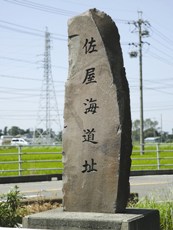
Sayakaido used to serve as a bypass on the Tokaido route, a side road for getting to Atsuta, and Kuwana by sea. The road was used in old times by people coming to visit temples and shrines and processions of daimyo traveling to Edo under the sankin kotai policy, as well as by Philip Franz von Siebold, Tokugawa Iemochi, and the Emperor Meiji.
Ichieguruma “Kurumaden” Monument
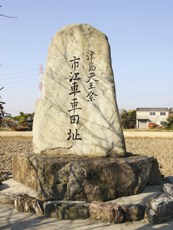
The morning events of the Owari Tsushima Tenno Festival center around the Ichiguruma. Here, the lord of Owari, an adherent of the Tsushima deity, would offer 53 koku or more of rice from a kurumada (circular rice field), which would then go to pay for the festival floats and entertainers. This monument stands at the spot where the kurumaden was located in those days.
Yonan-ji Temple
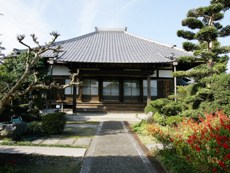
This temple is famous as the birthplace of the red lotus. Hirano Ryuten, temple head priest during the Tenpo era, introduced the red lotus (lotus root) from Omi province and cultivated it here.
Marushima Columbus Monument
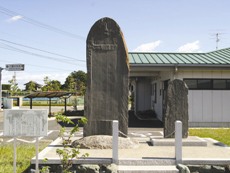
This monument, known by the name Yamada Yoshio, is located within the city of Aisai. Yamada was shipwrecked among sea otters but was saved by an American whaling ship, becoming the first resident of Aichi to visit the United States and go into business there.
Kama-jizo-ji Temple
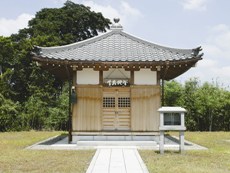
The Kama-jizo, a cast-iron statue of the bodhisattva Ksitigarbha (Jizo in Japanese), was made about 350 years ago and enshrined at this temple. It has been designated as one of the prefecture’s cultural treasures and counted as one of the Six Jizo of Owari.
Okutsusha Burial Mound
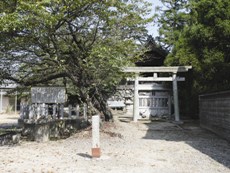
Okutsusha is the name of an ancient burial mound constructed in the mid-fourth century. From this mound, 25 m in diameter and 3.3 m high, late Yayoi period earthenware vessels, Haji pottery, and other valuable artifacts have been unearthed. The finds include three bronze mirrors (triangular-edged divine-beast mirrors) that have been designated prefectural cultural treasures.
Remains of Tsuda Masanari’s Home
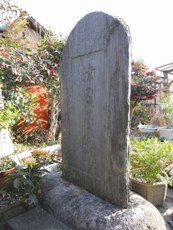
Th Okutsusha is the name of an ancient burial mound constructed in the mid-fourth century. From this mound, 25 m in diameter and 3.3 m high, late Yayoi period earthenware vessels, Haji pottery, and other valuable artifacts have been unearthed. The finds include three bronze mirrors (triangular-edged divine-beast mirrors) that have been designated prefectural cultural treasures.
is was the home of a littérateur from Nedaka-cho during the late Edo period. Masanari dedicated himself to the study of literature from an early age, getting into the study of Chinese and Japanese classics and penning works in numerous fields, including fiction, essays, and geographical descriptions. He’s particularly widely known for his work Owari Chimeiko, a commentary on the place-names of Owari.
Juni Castle Site
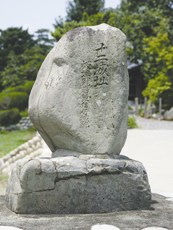
This was the castle residence of Itadaki Kaja, the lord who is said to have ruled the Old Saori-cho area during the Kamakura period. Today, all that remains of the castle is this stone monument.
Morokuwa Boat
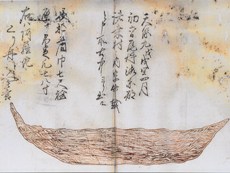
The ancient Morokuwa boat is the oldest hagibune (enlarged dugout-style boat) ever unearthed in Japan. It was discovered during the Edo period, unearthed by villagers in the village of Morokuwa, the boat was enormous, measuring 20 meters in length and 2 meters in width. Today, only fragments of wood remain.
ソーシャルサイトへのリンクは別ウィンドウで開きます
